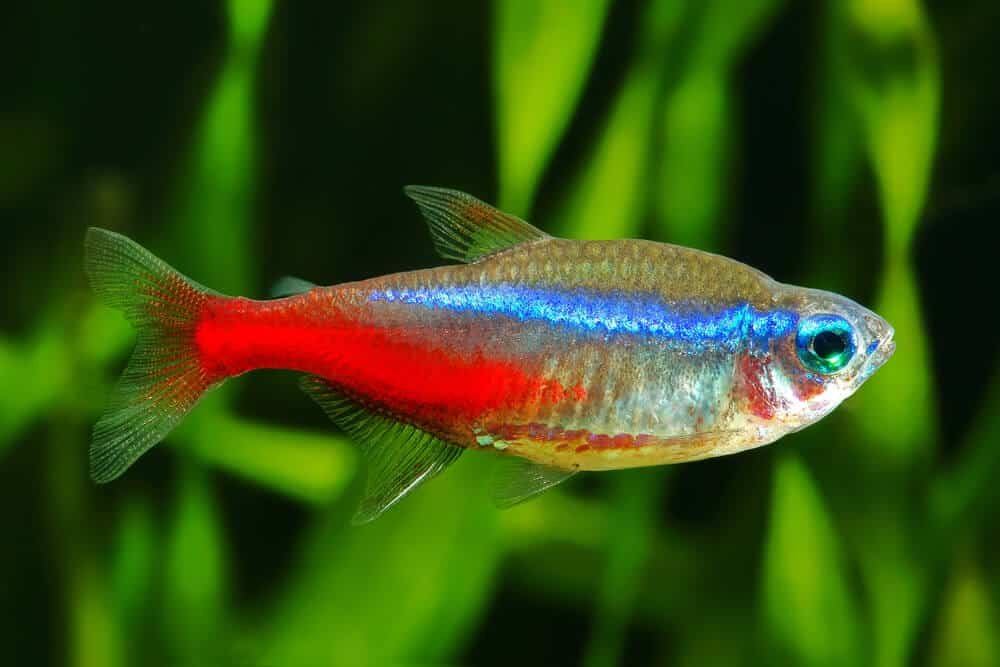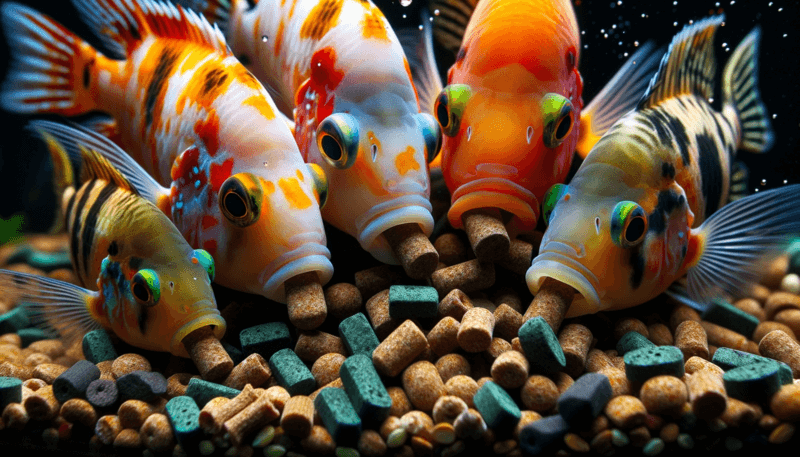How Do I Anchor Plants In The Aquarium?
Are you a beginner in the world of aquarium keeping and wondering how to effectively anchor plants in your underwater oasis? Well, look no further because we’ve got you covered! Anchoring plants in the aquarium is a vital step to ensure their stability and growth, and lucky for you, it’s simpler than you might think. In this article, we’ll explore various methods and techniques that you can easily implement to keep your aquatic plants anchored securely and thriving in their aquatic home. So, let’s jump right in and discover the key to anchoring plants in the aquarium!
Choosing the Right Plants for Anchoring
When it comes to anchoring plants in your aquarium, selecting plants with strong roots is essential. Well-established root systems provide stability and help the plants stay firmly planted in the substrate, preventing them from floating or being uprooted by fish or water movement. Look for plants that have thick root structures and healthy, white roots as these are indications of a plant’s ability to anchor effectively.
Additionally, considering the size of the plants is crucial. Some plants, such as tall stem plants, may require more substantial anchoring methods due to their height and weight. On the other hand, smaller rosette plants or rhizome plants may need less anchoring, depending on their size and growth. It’s important to choose plants that are compatible with your tank size and the available anchoring techniques you plan to use.
Lastly, the lighting conditions in your aquarium should also be taken into account. Different plants have varying light requirements, and it’s essential to choose plants that can thrive under the available lighting conditions in your tank. By selecting plants that are well-suited to the lighting intensity and spectrum in your aquarium, you’ll ensure their long-term health and success.
Methods for Anchoring Plants
Now that you have chosen the right plants, it’s time to explore different methods for anchoring them in your aquarium. Here are three common techniques:
Using a Substrate
One of the most popular methods for anchoring plants is by planting them in the substrate. This involves carefully inserting the roots of the plants into the substrate material, such as gravel or sand, ensuring they are well-covered and surrounded by the substrate. The weight of the substrate keeps the plants in place, providing stability.
Attaching Plants to Decorations
Another method is attaching plants to decorations, such as rocks or driftwood, using fishing line or plant-safe adhesive. This method is particularly useful for plants like mosses or anubias that do not require substrate planting. By securing them to decorations, you can create visually appealing focal points or provide additional hiding spots for your aquatic inhabitants.
Securing Plants with Weights
For certain species or situations where other anchoring methods are impractical, using weights can help keep plants in place. This method involves strategically placing weights, such as lead strips or plant weights, around the base of the plants to prevent them from floating. It’s crucial to use weights that are specifically designed for aquarium use, as using unsuitable materials can negatively impact water quality.
Preparing Plants for Anchoring
Before you anchor your plants, it’s essential to prepare them properly. Follow these steps to ensure optimum plant health and successful anchoring:
Cleaning the Plants
Thoroughly rinse the plants under running water to remove any impurities or debris that may have accumulated during transportation or handling. Gently shake them to dislodge any loose leaves or dead plant matter.
Trimming and Pruning
Inspect the plants for excessive or damaged growth, and trim or prune accordingly. This step not only helps the plants fit better into your desired aquarium layout but also promotes healthy growth and prevents potential decay or disease.
Removing Any Decaying Parts
Carefully inspect the plants for any signs of rot or decay, such as soft or discolored areas. Trim away any affected parts, as decaying plant matter can release harmful substances into the water and negatively impact the overall health of your aquarium.
Anchor Techniques for Different Types of Plants
Different types of plants require different anchoring techniques to ensure their stability and overall well-being in your aquarium. Here are some recommended anchor techniques for various plant types:
Anchoring Stem Plants
Stem plants, such as Rotala or Ludwigia species, are often anchored by planting their stems directly into the substrate. Gently insert the stems into the substrate, ensuring they are properly covered, and the plants are securely positioned.
Anchoring Rosette Plants
Rosette plants, like Amazon swords or Cryptocoryne species, usually have a well-defined central rosette or cluster of leaves. To anchor these plants, carefully plant their root systems into the substrate, covering the roots with a layer of substrate to provide stability.
Anchoring Rhizome Plants
Rhizome plants, including anubias or java ferns, have thick horizontal stems called rhizomes. These plants should not be buried in the substrate. Instead, attach them to decorations or wood using fishing line or plant-safe adhesive, ensuring the rhizomes are exposed and not covered.
Step-by-Step Guide to Anchor Plants in the Aquarium
Now that you have a good understanding of plant selection and anchor techniques, let’s walk through the step-by-step process of anchoring plants in your aquarium:
Step 1: Prepare the Substrate
Ensure your substrate is clean and free from debris. If needed, rinse it thoroughly before adding it to your aquarium. Create any desired slopes or hardscape features in your substrate to allow for effective anchoring and visual appeal.
Step 2: Insert Plants into the Substrate
For stem plants and rosette plants, gently insert their roots or stems into the substrate, ensuring they are securely planted. Space the plants according to their growth requirements and aesthetic preferences. Avoid overcrowding, as it can lead to poor plant health and limited accessibility for maintenance.
Step 3: Secure Plants to Decorations
For rhizome plants or mosses, secure them to decorations or driftwood using fishing line or plant-safe adhesive. Take care not to damage the plant or the decoration during this process. Ensure the plants are positioned as desired and have enough space to grow without being obstructed.
Step 4: Use Weights to Anchor Plants
If necessary, use weights to anchor plants that require additional stability. Place the weights around the base of the plants, ensuring they are secure but not overly constrictive. Monitor the plants closely to ensure the weights are not causing any harm or stress to the plant.
Maintaining Anchored Plants
Once your plants are securely anchored in the aquarium, it’s important to provide proper care and maintenance to ensure their continued health and growth. Here are some key aspects to consider:
Provide Adequate Lighting
Make sure your plants receive the appropriate amount and spectrum of light they require for optimal growth. Insufficient lighting can lead to weak and leggy growth, while excessive lighting can promote algae growth and cause stress to the plants.
Ensure Proper Water Parameters
Maintain suitable water parameters, including temperature, pH, and hardness, that are compatible with the specific needs of your plants. Different plant species have varying preferences, and providing the right environment will contribute to their overall health and well-being.
Regularly Trim and Prune
Regularly trim and prune your plants to maintain their desired shape, remove any old or decaying leaves, and prevent overcrowding. This practice promotes healthy growth and prevents the accumulation of organic matter that can affect water quality.
Monitor for Any Signs of Decay or Disease
Keep a close eye on your anchored plants for any signs of decay or disease, such as yellowing leaves, brown spots, or unusual growth patterns. Address any issues promptly by removing affected parts or treating the plants accordingly. Regular observation and maintenance will help ensure the long-term success of your aquarium plants.
Common Mistakes to Avoid
While anchoring plants in your aquarium, it’s essential to avoid common mistakes that can hinder their growth and overall well-being. Here are a few mistakes to steer clear of:
Neglecting Root Strength
Choosing plants with weak or underdeveloped root systems can result in poor anchoring and make it challenging for the plants to establish themselves in the aquarium. Always select plants with strong, healthy roots to ensure stability.
Crowding Plants
Planting too many plants close together can lead to competition for resources such as nutrients and light. Adequate spacing allows each plant to receive sufficient resources and prevents overcrowding, which can lead to poor growth and potential health issues.
Incorrect Placement of Plants
Consider the growth habits and requirements of each plant when deciding on their placement in your aquarium. Placing taller plants at the front can obstruct the view, while placing shorter plants at the back may result in them being overshadowed. Plan your layout carefully to create a visually appealing and balanced aquarium.
Benefits of Anchoring Plants
Anchoring plants in your aquarium offers numerous benefits for both the aquatic environment and its inhabitants. Here are some key advantages:
Enhanced Aesthetics
Anchored plants add a natural and visually pleasing element to your aquarium. They create a beautiful underwater landscape, providing depth and texture to the overall design. Well-placed and healthy plants can transform your tank into an eye-catching centerpiece.
Providing Shelter and Privacy for Fish
Aquarium plants provide essential hiding places and shelter for fish and other aquatic creatures. They create natural spaces for fish to retreat, reducing stress and promoting overall well-being. Floating or unanchored plants can also serve as spawning sites for certain species.
Improving Water Quality and Balance
Aquatic plants play a vital role in maintaining water quality by absorbing excess nutrients, reducing algae growth, and producing oxygen through photosynthesis. They contribute to the overall biological balance of the aquarium, creating a healthier and more stable environment for the inhabitants.
By selecting the right plants, using appropriate anchoring techniques, and providing necessary care, you can enjoy the numerous benefits of anchoring plants in your aquarium. Not only will your tank be visually appealing, but it will also provide a thriving and harmonious home for your aquatic companions. So go ahead, enhance your aquarium’s beauty and functionality by anchoring plants today!

